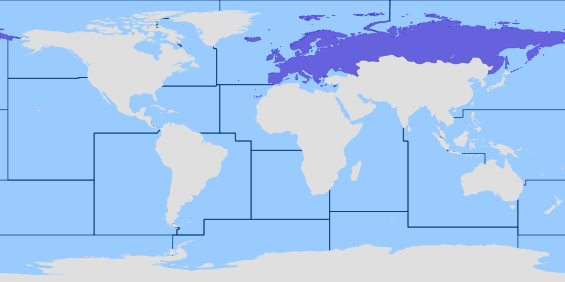angielskiCan be distinguished by the following characters: body and caudal peduncle moderately compressed; the minimum body depth is somewhat smaller than the width of the caudal peduncle at the level of the last anal ray in larger specimens and somewhat greater in smaller fishes; the anus is closer to the insertion of the anal fin than to the origin of the pelvic fins; absence of epithelial crests on the dorsal scales and absence of barbellike prolongations at the corners of the mouth; barbels are moderately long, usually extending beyond the anterior edge of the eye (only rarely do they not reach anterior eye edge), sometimes reaching up to the middle of the eye, but never reach to its posterior edge; the barbel length ranges from 15% to 28% of the head length with modal values between 21% and 22%; paired fins are moderately long: pectoral fins never reach the pelvic fin insertion, and their average length varies from 74.7% to 84.8% of the distance between the base of paired fins; ventral fins never reach the anal fin insertion, and their average length varies from 72.8% to 75.7% of the distance between ventral and anal fin bases; there are large, more or less rounded, dark spots located along the lateral line and several rows of small dark spots on the dorsal and caudal fins; large eye with a diameter greater than ¾ of the interorbital distance; the breast in front of the level of the rear extent of the pelvic fin insertions usually lacks scales; the lateral branch of the supraorbital cephalic sensory canal (CSO) is connected with the infraorbital canal behind the eye; usually seven pores in the frontoparietal area of CSO and five pores in the pteroticum; both supra and infraorbital bones are wide: the average width of the supraorbital bone exceeds 40% of its length, and the average width of the last infraorbitals comes to more than half of the bone length (Ref. 76908).
Zobacz tłumaczenie
Przetłumaczone z angielski przez BING
Niniejsze tłumaczenie ma charakter czysto wskazujący: z uwagi na ograniczoną jakość tekstu źródłowego, opisy morfologiczne są dostępne tylko w języku angielskim w wersji beta systemu. Informacje w innych językach zostaną udostępnione w kolejnych wersjach.
polskiMożna wyróżnić następujące znaki: ciało i ogonowej szypułki umiarkowanie skompresowane; głębokość minimalna ciała jest nieco mniejsze niż szerokość nasady ogona na poziomie ostatni promień odbytu u większych osobników i trochę większe w mniejszych ryb; odbytu jest bliżej do wstawiania anal fin niż pochodzenia płetw brzusznych; brakiem nabłonka grzebienie grzbietowe łuski i braku barbellike dotąd w kącikach usta; barbels są umiarkowanie długo, zazwyczaj wykraczających poza przedniej krawędzi oka (tylko rzadko nie osiągną krawędzi przedniej oka), czasami dochodzących do polowy oka, ale nigdy nie dotrzeć do tylnej krawędzi; Brzana długość waha się od 15% do 28% długości głowy z modalne wartości między 21 a 22%; sparowany płetwy są umiarkowanie długa: płetwy piersiowe nigdy nie dotrzeć do wstawiania fin miednicy, a ich średnia długość waha się od 74.7% 84.8% odległości między podstawy płetwy pary; Płetwy brzuszne nigdy nie dotrzeć do wstawiania odbytowej, a ich średnia długość waha się od 72.8% 75.7% odległości między podstawy Płetwy brzuszne i odbytu; są duże, mniej lub bardziej zaokrąglone, ciemne miejsca znajdujące się wzdłuż linii bocznej i kilka rzędów małych, ciemnych plam na płetwy grzbietowej i ogonowej; duże oczy o średnicy większej niż ¾ oczodołami odległość; piersi przed poziomu tylnego stopnia wstawienia fin miednicy zwykle brakuje wagi; bocznej gałęzi nadoczodołowej cephalic kanału sensoryczne (CSO) jest połączony z podoczodołowych kanału za oko; zwykle siedem porów w obszarze frontoparietal (CSO) i pięć porów w pteroticum; zarówno supra i kości podoczodołowych są szerokie: średnia szerokość kości nadoczodołowej przekracza 40% jej długości, a średnia szerokość ostatni infraorbitals chodzi o więcej niż połowę długości kości (Ref. 76908).
 Obraz niedostępny
Obraz niedostępny